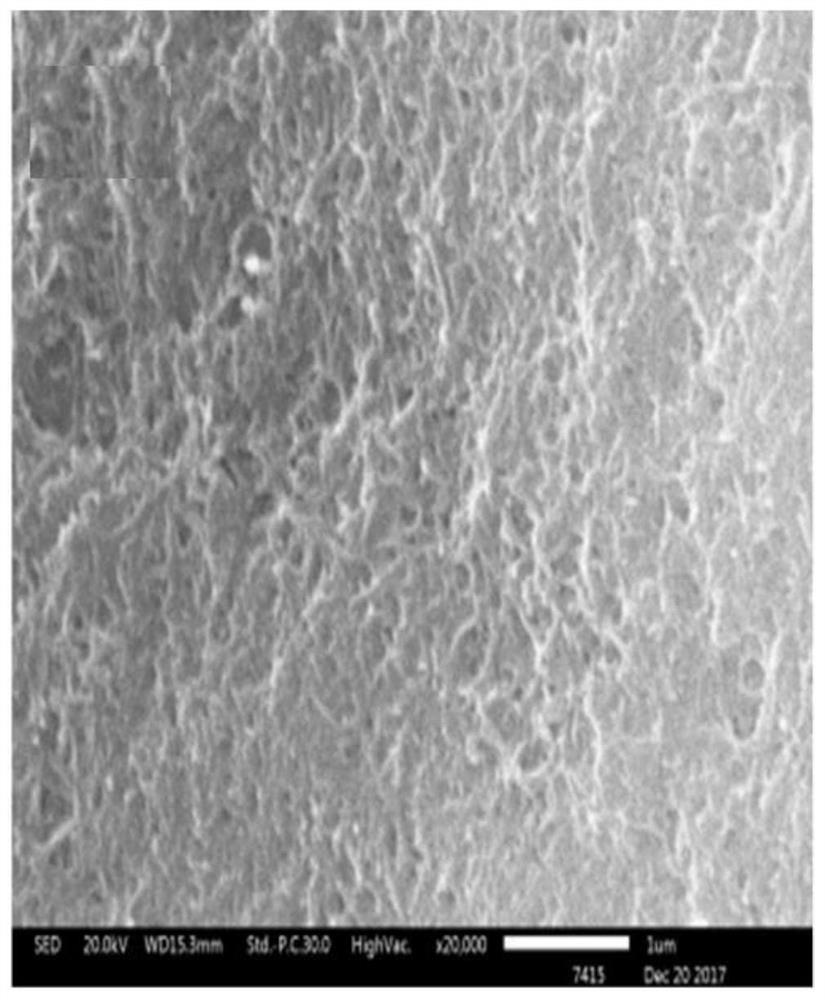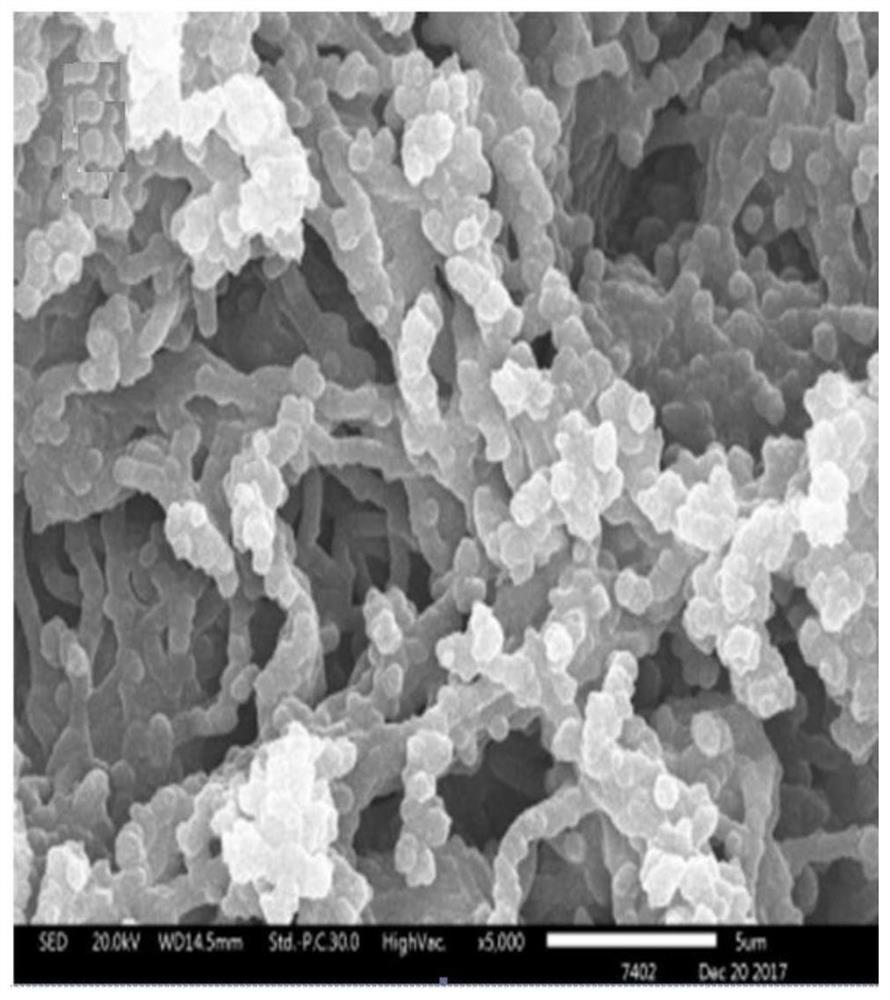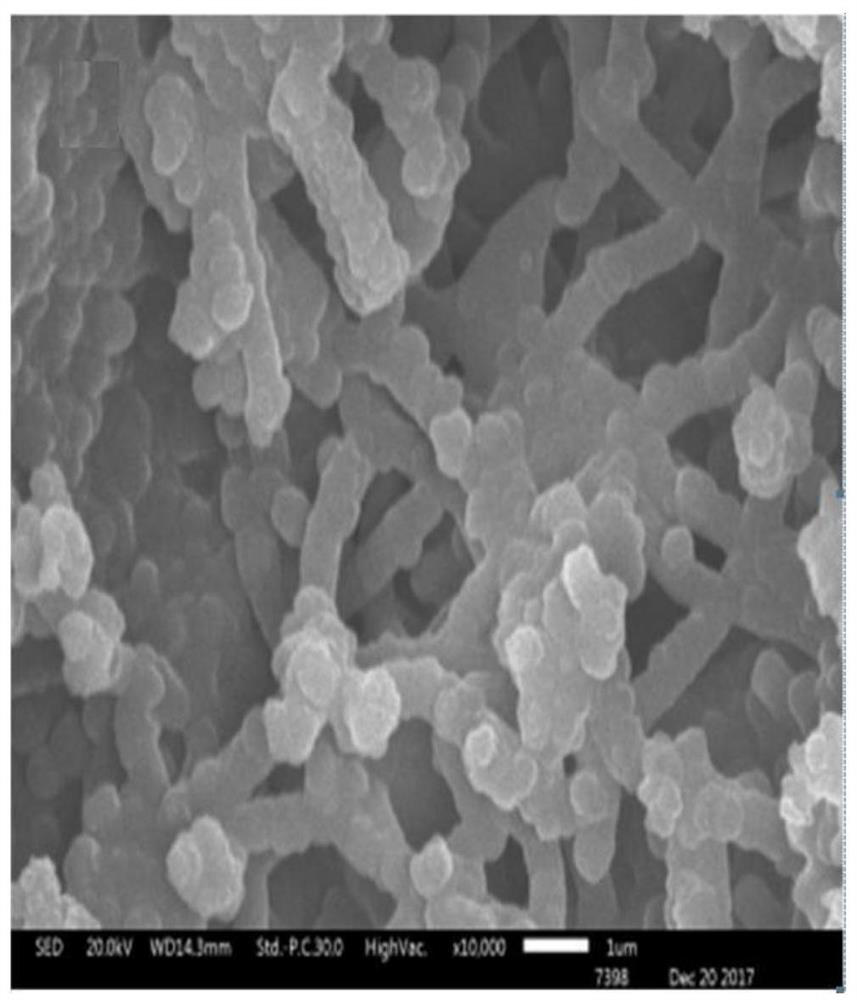Carbon nanotube/polypyrrole composite fiber and its preparation method and its application in transistor sensors
A carbon nanotube and composite fiber technology, applied in the field of biosensors, can solve the problems of narrow detection range and high production cost of flexible lactic acid sensors
- Summary
- Abstract
- Description
- Claims
- Application Information
AI Technical Summary
Problems solved by technology
Method used
Image
Examples
Embodiment 1
[0078] This embodiment provides a method for preparing a carbon nanotube / polypyrrole composite fiber-based transistor sensor, which includes the following steps:
[0079] 1) Configure carbon nanotube dispersion: take the mass of 1g carbon nanotubes, 1g sodium dodecyl sulfate and 100g deionized water, respectively, and ultrasonically treat for 1 hour after mixing to obtain carbon nanotube dispersion;
[0080] 2) Preparation of flexible fibers coated with carbon nanotube layers: take the PA6 nylon fibers whose surfaces have been ultrasonically cleaned with ethanol, and place them in the carbon nanotube dispersion in step 1) for repeated immersion for 4 h, take out, wash with water, and dry. A flexible fiber coated with a carbon nanotube layer is obtained;
[0081] 3) Configure mixed solution A: take 0.15 g of anthraquinone-2-sulfonic acid sodium salt, and dissolve 1.8 g of pyrrole monomer into deionized water to obtain 150 mL of mixed solution A;
[0082] 4) configure mixed sol...
Embodiment 2
[0091] This embodiment provides a method for preparing a carbon nanotube / polypyrrole composite fiber-based transistor sensor, which includes the following steps:
[0092] 1) Configure carbon nanotube dispersion: take the mass of 1g carbon nanotubes, 1g sodium dodecyl sulfate and 100g deionized water, respectively, and ultrasonically treat for 1 hour after mixing to obtain carbon nanotube dispersion;
[0093] 2) Preparation of flexible fibers coated with carbon nanotube layers: take the silk fibers whose surfaces have been ultrasonically cleaned with ethanol, place them in the carbon nanotube dispersion in step 1) and soak them for 4 hours, take out, wash with water, and dry to obtain Flexible fibers coated with carbon nanotube layers;
[0094] 3) Configure mixed solution A: take 0.15 g of anthraquinone-2-sulfonic acid sodium salt and 1.8 g of pyrrole monomer in deionized water to obtain 150 mL of mixed solution A;
[0095] 4) configure mixed solution B: get 30g of 9-hydrated ...
Embodiment 3
[0104] This embodiment provides a method for preparing a carbon nanotube / polypyrrole composite fiber-based transistor sensor, which includes the following steps:
[0105] 1) Configure carbon nanotube dispersion: take the mass of 1g carbon nanotubes, 1g sodium dodecyl sulfate and 100g deionized water, respectively, and ultrasonically treat for 1 hour after mixing to obtain carbon nanotube dispersion;
[0106] 2) Preparation of flexible fibers coated with carbon nanotube layers: take polyester fibers whose surfaces have been ultrasonically cleaned with ethanol, soak them in the carbon nanotube dispersion in step 1) for 4 hours, take out, wash with water, and dry to obtain Flexible fibers coated with carbon nanotube layers;
[0107] 3) Configure mixed solution A: take 0.15 g of anthraquinone-2-sulfonic acid sodium salt and 1.8 g of pyrrole monomer in deionized water to obtain 150 mL of mixed solution A;
[0108] 4) configure mixed solution B: get 30g of 9-hydrated ferric nitrate...
PUM
| Property | Measurement | Unit |
|---|---|---|
| length | aaaaa | aaaaa |
| concentration | aaaaa | aaaaa |
| concentration | aaaaa | aaaaa |
Abstract
Description
Claims
Application Information
 Login to View More
Login to View More - R&D
- Intellectual Property
- Life Sciences
- Materials
- Tech Scout
- Unparalleled Data Quality
- Higher Quality Content
- 60% Fewer Hallucinations
Browse by: Latest US Patents, China's latest patents, Technical Efficacy Thesaurus, Application Domain, Technology Topic, Popular Technical Reports.
© 2025 PatSnap. All rights reserved.Legal|Privacy policy|Modern Slavery Act Transparency Statement|Sitemap|About US| Contact US: help@patsnap.com



